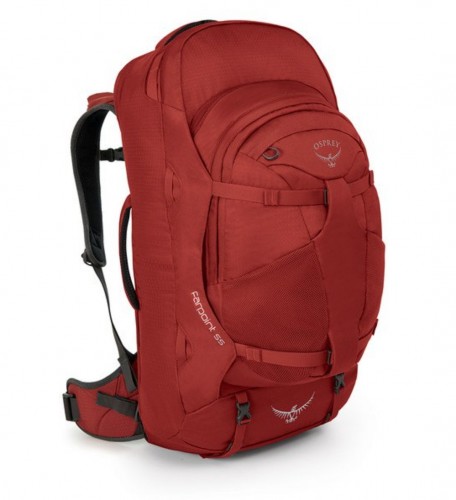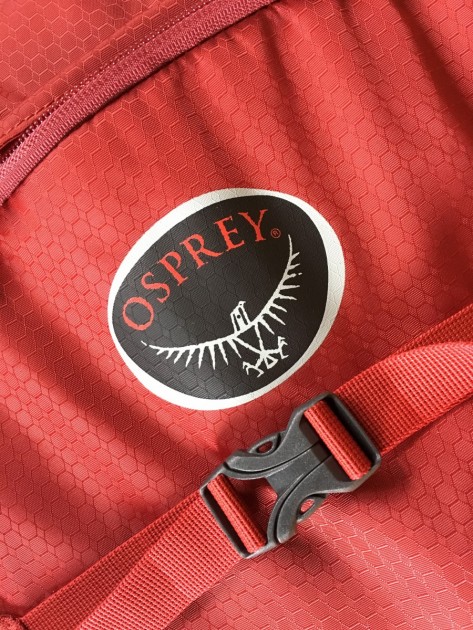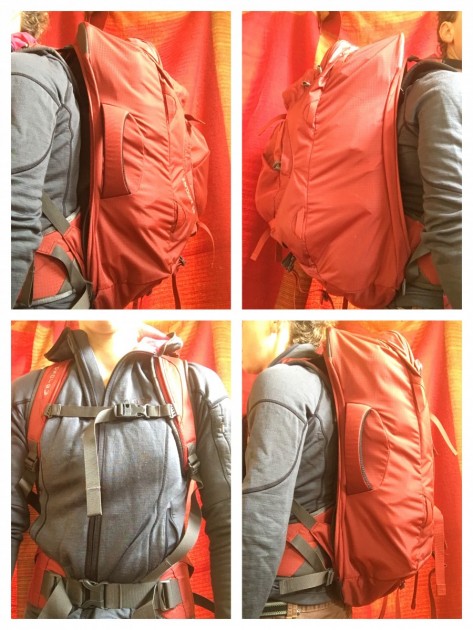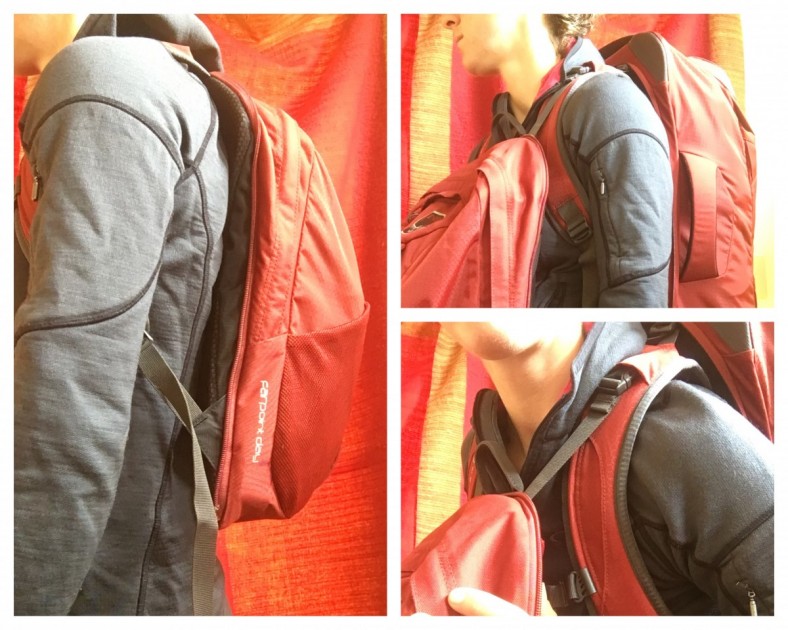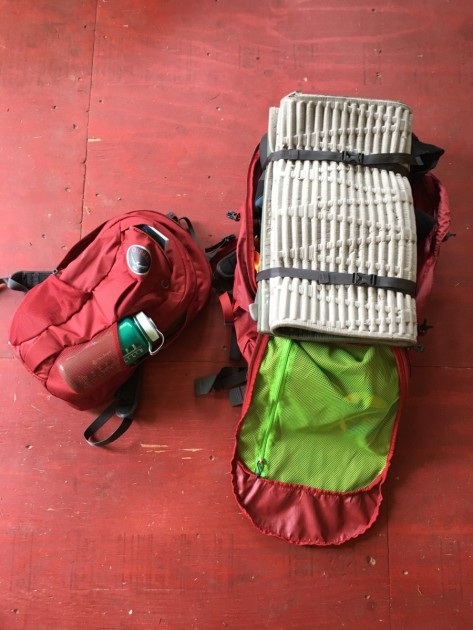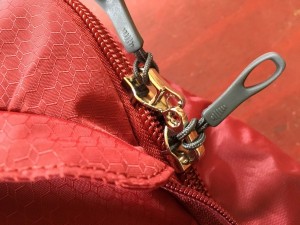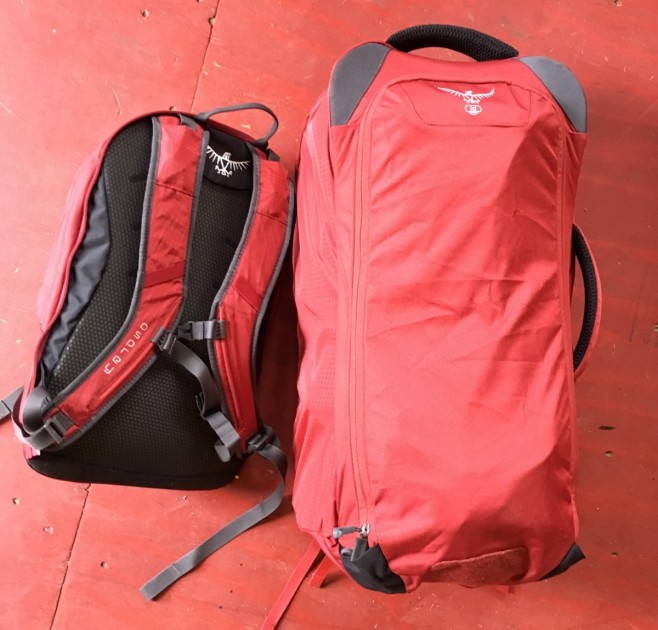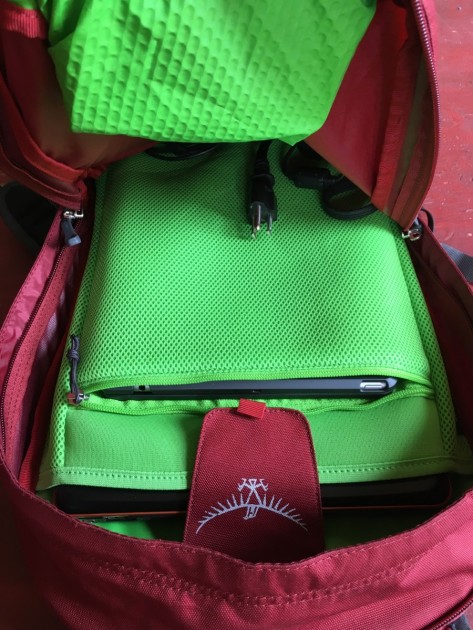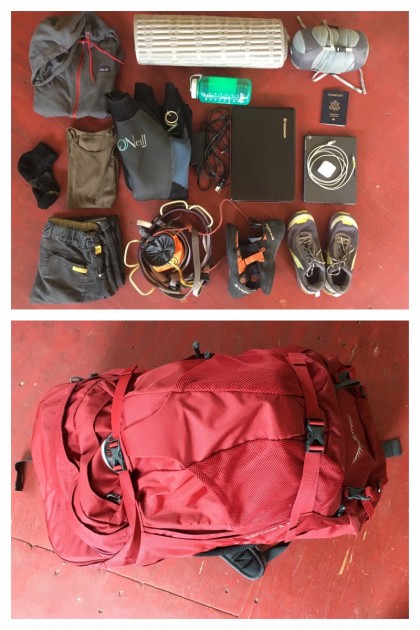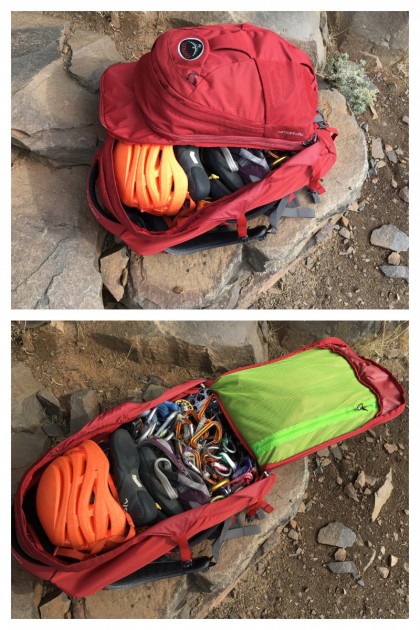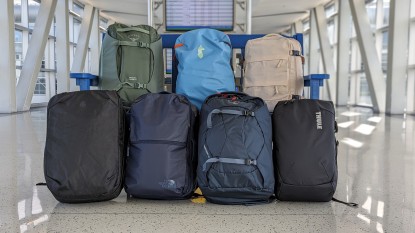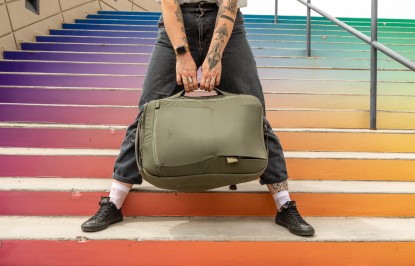Osprey Farpoint 55 Review
Our Verdict
Our Analysis and Test Results
The Farpoint 55 was a solid performer in this travel pack review. It scored well across the board, but nearly topped the charts in our top three categories: comfort, features, and packing & accessibility.
Comfort
Osprey's Farpoint 55 travel backpack earns top marks for comfort. The Farpoint looks more like a traditional backpacking pack, while other travel backpacks look more like a soft suitcase. Though this makes the Farpoint stand out a bit more in airports, it is at home in more rugged, rural, and backcountry travel settings, and a great option for those on international backpacking adventures, who often stay in hostels.
The Farpoint is most comfortable around 35 pounds, having one of the highest comfort ranges in the review. You can take the daypack off and have a supremely comfortable fast-and-light pack option as well, for toting around town, or to take on a short bike tour or day hike--this pack covers comfort at both ends of the pack weight spectrum. The day pack, we found, was comfortable up to about 15 pounds, but lays flat against your back with lighter loads.
The LightWire Frame suspension of the main pack is as comfortable as many of Osprey's backpacking and climbing packs. The day pack does not have a hip belt, but it is small, so it really doesn't need one (it probably won't carry enough weight to irritate your shoulders).
We especially liked the clever buckles that hang the day pack comfortably in front of your body when carrying both the main and day packs at the same time. This feature means you don't have to the shoulder straps of the day pack behind your shoulders, which then pulls your shoulders in opposing directions.
Features
Our favorite feature on the Osprey Farpoint 55 is the detachable day pack. This is an immensely useful design for travel. When you arrive at your destination, throw down the pack, unzip the day pack, and you're light and free to travel around town.
The features within that day pack are also excellent: there are several small, useful pockets, a padded sleeve to protect your laptop, and a zippered pocket that will keep smaller electronics, like a tablet, secure and padded as well. The outer mesh water bottle holders are also big enough to hold your 1 liter Nalgene water bottle.
One disagreement arose among our testers: when you detach the day pack, the main pack is not carry on size. For some, it would have made much more sense to have a modular pack which could separate into one carry on and one personal item, thus meaning no checked bags at all! That would be awesome.
However, some of our testers preferred to be light on their feet in the airport, as it can be fatiguing and irritating to wait in long security lines with all of your luggage on your back, and sometimes it is just easier to throw your toiletries and any sharp items into a checked bag rather than measuring out your shampoo and combing through your bag for anything which might alert the X-Ray guards at TSA. Depending on where you stand, the fact that you cannot check the main pack may be frustrating, or it may be a non issue.
Osprey addressed this exact issue with the Ozone Duplex 60 which has a carry on sized “duffel” that attaches to the smaller day pack. Separate the two and you have your carry on and your personal item! Putting the larger compartment on the outside may seem nonsensical, but we found that this part was best for clothing and puffier, lighter weight items, so it didn't make the bag feel too unwieldy or unbalanced. Clever!
The Farpoint has lockable zippers on both the main and day packs. It has very useful buckles on the shoulder straps of both bags which allow you to carry the big one on your back and the day pack in front (as mentioned in the Comfort section above). It has very handy handles on both the main and day packs which lend confidence when grabbing the pack from any side or angle, with or without the day pack attached, off a baggage carousel or anywhere else you might be grabbing and tossing it.
The suspension system can be protected if you're checking this bag by zipping a protective flap over the shoulder and hip belts. On the other side of the pack, the outer compression straps clean up the bag, making it more sleek and compact for travel on the baggage carousel, but also compressing it into a tighter, more maneuverable load when on your back.
There is no rain cover on this pack, which sometimes comes built in on backpacking packs, so if you need one, be sure to find one that fits, or just carry some heavy duty trash compactor bags which you can pack your luggage into (as a liner inside the backpack, or even over the top of the pack, in a pinch).
Packing & Accessibility
The Farpoint is the largest travel backpack in this review. As such, this is the bag to take on extended international trips, including those in which you might be doing some backpacking.
The daypack has padded laptop and tablet sleeves, so if you use the daypack as your carry on, it is very easy to pull out your electronics at the security checkpoint.
For some, it might make more sense to have a backpack that separates into a main and day pack, like the Farpoint, but which becomes carry on size with the day pack as your small “personal item”. With this system, you don't have to check any bags but get to maximize your carry on luggage with only one travel pack. Osprey has addressed this niche with the Osprey Porter 46, also one of our award winners, by advising consumers that you can attach one of their day packs to the outside using the sewn gear loops. Kind of a stopgap, we think, but maybe that works for you. For now, we are relatively happy with one checked bag and the small day pack.
The Farpoint was not the easiest to pack due to the floppy sides of the main compartment. This is in contrast with the more rigid foam side panels of the Osprey Porter 46, which made packing a breeze. However, you can pack this bag as a top loader by simply unzipping the top and stuffing things inside, similar to how you would pack a backpacking or technical climbing backpack.
Also, the Farpoint has a more substantial backpanel than the Osprey Porter 46, so we didn't have to pay as much attention to what we packed against our backs to ensure awkwardly shaped, hard objects didn't end up protruding into our backs.
If you prefer the free-form organization of a duffel, check out the Eagle Creek Cargo Hauler which is so light and compressible that it stuffs into its own side pocket.
Durability
The Farpoint 55 was above average for durability among packs in this review. It was not made of the toughest fabrics, but they were more than adequate for travel and backpacking use, while remaining lightweight and supple for extended carrying times and odd shaped loads (like what you might take for a few days of backpacking).
The workmanship of the bag was definitely up to Osprey standards: great zippers, strong sewn seams, durable buckles and straps. No issues to report!
Weight & Capacity
The Farpoint 55 was the heaviest travel pack in our review, but it also has the highest capacity, and it is technically two packs. As such, it didn't get the highest rating for weight/capacity, due to some tough competition, but we thought it did quite well in this category.
Value
This is among the pricier travel packs in this review at $180, but given all of the features, the durability, the excellent comfort, and the fact that it really is two packs in one, we felt it was well worth the cost. Even if you don't use the big bag all that often, we found ourselves toting the day pack around often in everyday life at home.
Conclusion
Another excellent travel product from Osprey. This is one of the most versatile travel backpacks in the review, though it does have an obvious lean toward outdoor trips where you'll be hitting the trail rather than hanging out in urban venues or traveling for business. This pack was an obvious award winner in our trials, tests, and travels.


